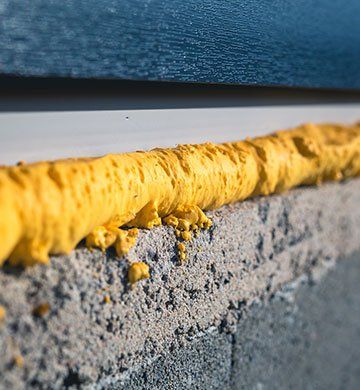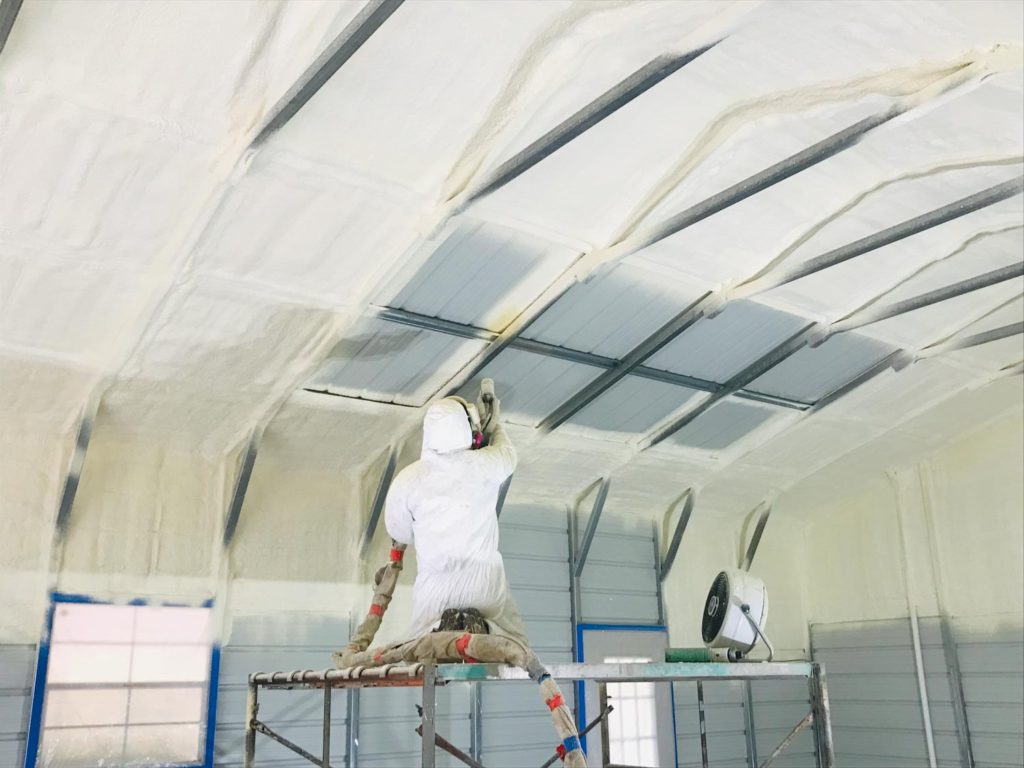Spray Foam: The Ultimate Service for Air Sealing and Insulation
Spray foam insulation has arised as a leading solution for reliable air sealing and thermal insulation, offering a distinct combination of buildings that establish it apart from typical approaches. Recognizing the full scope of its benefits, installment procedures, and contrasts with other insulation types is essential for making notified choices.
What Is Spray Foam?
Spray foam is a functional insulation product that incorporates the principles of air securing and thermal resistance to improve energy effectiveness in structures. Composed mainly of polyurethane or other similar compounds, spray foam is applied as a fluid that increases upon call with surface areas, creating a strong, continuous layer of insulation. This unique residential or commercial property enables it to fill up spaces, fractures, and spaces that standard insulation products may forget, giving an exceptional air seal.
There are two main kinds of spray foam: open-cell and closed-cell. Open-cell spray foam is lighter and a lot more adaptable, supplying superb noise absorption and a lower R-value per inch - Spray Foam. On the other hand, closed-cell spray foam is denser, offering a higher R-value, moisture resistance, and added architectural stability to developing elements
The application process normally entails specific devices, making sure a seamless application that abides by numerous substratums, including concrete, metal, and timber. This adaptability makes spray foam ideal for both brand-new buildings and retrofitting existing structures. Its capability to create a closed barrier significantly adds to minimizing energy consumption and boosting indoor air top quality, consequently making it a recommended selection amongst contractors and property owners alike.
Benefits of Spray Foam Insulation
Among one of the most substantial benefits of spray foam insulation is its remarkable capability to produce a continual air obstacle, which properly lessens power loss. Unlike typical insulation materials, spray foam expands to fill cracks and gaps, making sure that air leak is considerably minimized. This characteristic not only improves power efficiency yet also causes lower utility expenses over time.
Additionally, spray foam insulation provides remarkable thermal resistance, contributing to a more secure indoor atmosphere. Its high R-value per inch permits effective insulation in constrained rooms, making it excellent for attics, wall surfaces, and crawl rooms. The moisture-resistant homes of spray foam aid prevent mold and mildew growth, promoting much healthier living problems.
An additional essential benefit of spray foam insulation is its sound-dampening high qualities (Spray Foam). It successfully lowers sound transmission in between areas, developing a quieter and more comfortable home atmosphere. The durability of spray foam also stands out, as it does not sag or resolve gradually, preserving its efficiency throughout its life expectancy
How Spray Foam Functions
Recognizing just how spray foam insulation functions is crucial for valuing its efficiency in air sealing and thermal resistance. Spray foam insulation contains two key parts: isocyanate and polyol material. When these components are mixed, they undertake a chemical reaction that triggers the material to broaden quickly, creating a dense foam that fills cavities, splits, and spaces.
As the foam expands, it sticks to surfaces, forming a closed seal that substantially lowers air seepage. This particular makes spray foam insulation very effective at protecting against drafts and wetness penetration, which can bring about power loss and damage gradually. In addition, the closed-cell version of spray foam supplies premium thermal resistance due to its inflexible framework, successfully minimizing warmth transfer.
The special properties of spray foam enable it to adapt uneven surface areas, making sure thorough coverage and a seamless barrier. Therefore, spray foam insulation not just boosts power performance yet additionally adds to enhanced interior air top quality by reducing the accumulation of allergens and pollutants. Inevitably, understanding the mechanics behind spray foam highlights its duty as a remarkable selection for insulation and air securing in both domestic and business applications.
Installation Process Introduction

Before setup, the area has to be effectively cleansed and prepped, making sure that surface areas are without moisture, debris, and dirt. Since impurities can endanger adhesion and overall performance, this step is important. As soon as the area is prepared, the application involves mixing both parts of the spray foam, which expands upon contact and fills up spaces properly.
Educated professionals ought to carry out the installment, making use of specialized devices to ensure consistent insurance coverage and ideal thickness. Security safety measures, including using safety equipment and ensuring proper ventilation, are vital during this process. After application, the foam normally treatments swiftly, creating Discover More Here a strong obstacle that enhances energy effectiveness.
Comparing Spray Foam to Conventional Insulation
When examining insulation options, spray foam insulation stands out in contrast to standard materials such as fiberglass and cellulose. Unlike fiberglass and cellulose, which can permit air seepage, spray foam expands upon application, loading spaces and holes to produce an airtight seal.
Additionally, spray foam gives a higher R-value per inch than conventional insulation kinds, offering even more reliable thermal resistance in a thinner profile. This characteristic is specifically valuable precede with restricted tooth cavity depth. Spray foam is immune to moisture and mold development, which can be a significant worry with cellulose and fiberglass, especially in humid environments.
Nevertheless, spray foam insulation commonly lugs a higher upfront expense than its standard counterparts. Property owners need to consider this initial financial investment against lasting power financial savings and performance benefits. Eventually, while both insulation types offer their function, spray foam arises as an advanced service for contemporary insulation requirements, specifically in regards to air securing and thermal performance.

Final Thought
In recap, spray foam insulation stands for a very effective solution for accomplishing ideal air sealing and thermal resistance. Its distinct residential or commercial properties, including dampness resistance and sound dampening, make it appropriate for different applications in both brand-new building and constructions and retrofitting projects (Spray Foam). Although he said the first costs might be greater contrasted to typical insulation materials, the long-lasting benefits, such as substantial power financial savings and boosted interior air top quality, warrant the financial investment and underscore its value in modern building methods.
Spray foam insulation has emerged as a leading option for efficient air sealing and thermal insulation, supplying an one-of-a-kind mix of residential properties that establish it apart from traditional approaches.Spray foam is a versatile insulation product that incorporates the principles of air securing and thermal resistance to boost energy performance in structures.When examining insulation options, spray foam insulation stands out in contrast to standard materials such as fiberglass and cellulose. Inevitably, while both insulation kinds serve their objective, spray foam arises as a more why not try here advanced solution for modern-day insulation requirements, especially in terms of air sealing and thermal performance.
In recap, spray foam insulation stands for an extremely efficient solution for accomplishing optimal air securing and thermal resistance.